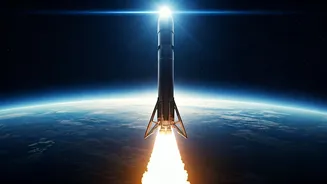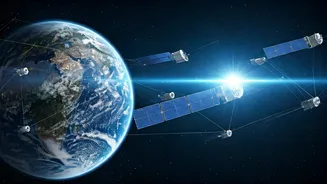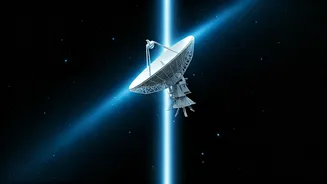Lift-off and Ascent
The Falcon 9 rocket, a reusable two-stage rocket developed by SpaceX, experienced a flawless launch. The launch was a spectacle, with the powerful engines
igniting and lifting the rocket from the launchpad. The first stage of the rocket, after separation, successfully landed back on Earth, showcasing SpaceX's reusable rocket technology. This crucial maneuver is vital for minimizing costs and increasing the frequency of launches. The rocket's ascent was smooth, and the second stage continued its trajectory into space, carrying the payload of Starlink satellites. The precise timing and execution of the launch sequence were vital, requiring meticulous planning and coordination among the SpaceX team to ensure the rocket reached the planned orbit.
Starlink Satellite Deployment
Upon reaching the designated orbit, the second stage of the Falcon 9 prepared for the critical deployment of the 29 Starlink satellites. SpaceX's automated system handled the deployment process with precision, carefully releasing each satellite into its intended position. The Starlink satellites were strategically placed to establish their individual positions within the extensive constellation in space. Each satellite began its operation in the orbit. The deployment was carried out with extraordinary precision to prevent any possibility of collisions or interference. Following deployment, the satellites were switched on and began transmitting signals back to the ground stations. This step marks the finalization of the mission.
Expanding Internet Coverage
The addition of 29 new Starlink satellites will contribute significantly to the expansion of SpaceX's global internet coverage. These satellites are designed to provide high-speed, low-latency internet access to remote and underserved areas across the globe. By augmenting the existing constellation, SpaceX aims to enhance network capacity and improve the overall internet experience. The aim is to bridge the digital divide, offering connectivity in areas where traditional internet infrastructure is limited or nonexistent. The expanded coverage will enable enhanced communication, education, and access to critical services in regions where it has been previously challenging.
Reusability and Sustainability
A defining aspect of SpaceX's operations is the commitment to reusability. The Falcon 9 rocket's first stage landing and recovery demonstrate this principle. SpaceX's ability to reuse rocket components significantly reduces the cost of space travel. This method enhances the sustainability of space exploration and reduces environmental impact. Further, the reusability factor allows more frequent launches. This approach plays a crucial role in lowering the cost of space missions and making space travel more accessible, setting a precedent in the space industry and inspiring innovation.
Impact and Future Plans
The successful launch and deployment of 29 Starlink satellites are a milestone in SpaceX's continuing commitment to space. This mission will enable people in far-flung regions to experience a better internet experience. SpaceX plans to further expand its Starlink constellation through regular launches. The continuous development and deployment of Starlink satellites are critical to SpaceX's long-term strategy for providing global internet connectivity. These efforts will keep SpaceX at the forefront of space technology, facilitating communication advancements worldwide and creating new opportunities for exploration and scientific discovery.












